青藏高原纳木错流域持久性有机污染物的多介质迁移与归趋模拟
2017-10-13任娇王小萍王传飞龚平姚檀栋
任娇,王小萍,王传飞,龚平,姚檀栋
1. 中国科学院青藏高原研究所,中国科学院青藏高原环境变化与地表过程实验室,北京 1001012. 中国科学院青藏高原地球科学卓越创新中心,北京 1001013. 中国科学院大学,北京100049
青藏高原纳木错流域持久性有机污染物的多介质迁移与归趋模拟
任娇1,3,王小萍1,2,*,王传飞1,2,龚平1,2,姚檀栋1,2
1. 中国科学院青藏高原研究所,中国科学院青藏高原环境变化与地表过程实验室,北京 1001012. 中国科学院青藏高原地球科学卓越创新中心,北京 1001013. 中国科学院大学,北京100049
南亚排放的持久性有机污染物(POPs)可随大气传输到青藏高原,然而POPs在高原多介质间的迁移与分配尚不清晰。本研究利用三级逸度模型对4种POPs(六六六α-HCH,滴滴涕p,p′-DDT,菲Phe和苯并芘BaP)在纳木错流域的迁移与归趋进行了模拟。结果表明,大气沉降是该区域污染物的主要输入过程,而降解损失则是主要的输出途径。就最终归趋而言,土壤是POPs在纳木错流域的重要储库,其存储了大于50%的POPs。此外,湖水和沉积物分别对α-HCH和PAHs具有较强的存储能力。灵敏度分析的结果表明,环境温度、大气中POPs的浓度及其理化性质是影响POPs在环境中分布的关键参数。本研究明确了纳木错流域不同POPs的迁移方向和归趋特征,这将为青藏高原生态安全评估提供科学依据。
青藏高原;持久性有机污染物;多介质逸度模型;迁移;归趋
Received20 January 2017accepted13 March 2017
Abstract: Persistent organic pollutants (POPs) emitted from South Asia can be transported to the Tibetan Plateau (TP), driven by favorable atmospheric circulation; however, their transfer between different media (air, soil, water, sediment etc.) and their final fate in the TP are unclear. In the present study, a level III fugacity model was applied to simulate the exchange fluxes and concentration distributions of four POPs (α-HCH, p,p′-DDT, Phe and BaP) in Nam Co Basin. The results showed that atmospheric deposition is the main input process for POPs into this region, and degradation is the main elimination pathway. Soil is the major sink of POPs, accounting for more than 50% of their total reserves. In addition, lake water and sediment have a certain storage capacity for α-HCH and polycyclic aromatic hydrocarbons, respectively. Sensitivity analysis showed that the concentrations of POPs in the air, their physicochemical properties, and air temperature, are key parameters affecting the environmental behavior and distribution of POPs. In conclusion, the direction of transfer, the fluxes amounts, and the final fate of different POPs among different media in Nam Co were successfully quantified in the model, thus contributing to a scientific basis for ecological safety assessments within the TP region.
Keywords: Tibetan Plateau; persistent organic pollutants (POPs); multimedia fugacity model; transfer; fate
持久性有机污染物(POPs)因其在环境中难以降解、对生物有着高毒性而受到广泛关注[1]。由于具有半挥发性,POPs能够随大气进行长距离迁移[2-3],从而在全球范围内分布。即使在远离人类活动的南极、北极和青藏高原也能监测到POPs的踪迹[4-6]。相比南北极,青藏高原毗邻印度、巴基斯坦和尼泊尔等污染严重的南亚国家[7],因而更易受到污染源区的影响。目前,青藏高原的POPs研究已取得初步进展,多项证据都表明南亚排放的有机氯农药(OCPs)[8-11]和多环芳烃(PAHs)[12-13]能够在印度季风和西风的驱动下传输至高原内部。青藏高原的土壤[14-15]、草地[16]、冰雪[17-19]、湖水[20]、沉积物[21-22]和鱼体[23-24]中都有POPs的相关报道,然而这些研究只能说明污染物到达了青藏高原。POPs在高原各环境介质之间是如何迁移与分配的?其最终归趋如何?显然,目前的研究尚无法回答这些问题,只有将多介质环境行为相结合才能全面认识污染物在青藏高原的来龙去脉、辨析各环境介质在POPs迁移与存储中的作用,因此青藏高原POPs区域循环的系统研究亟待开展。
青藏高原平均海拔在4 000 m以上,被称为地球“第三极”,在此特殊地理单元中,污染物的迁移与循环也必然有其独特之处。高原环境气候寒冷,低温会减弱地表挥发,而加剧POPs的冷凝与沉降作用[25]。然而,近几十年来,青藏高原正经历着显著的变暖[26],山地冰川加速消融、径流量增加[27],这可能会促进污染物的释放并向下游湖泊输送。那么,在固有的低温环境与全球升温的耦合作用下,POPs在由大气-土壤-冰川-湖水-沉积物所组成的区域系统中经历着怎样的循环过程?各介质对POPs的存储起到多大作用?这些问题显得尤为重要。
在污染物多介质循环的研究中,实测难度较大,而模型的运用能够简化环境过程,达到全面评估污染物归趋的目的。近年来,加拿大学者Mackay[28-29]开发的逸度模型成为研究POPs环境行为的有力工具,用逸度来描述污染物在多环境介质中的分配、迁移和归趋是该模型的最大优势。稳态的三级逸度模型已被运用于北京[30]、天津[31-32]、兰州[33]等地区研究POPs的跨界面环境过程,其结果与实测吻合较好。除区域的研究外,Wania和Mackay[34]首次将逸度模型应用于全球尺度,揭示了POPs在全球环境中的迁移规律。可见,逸度模型的适用性广、预测效果好。因此,本研究拟借助多介质逸度模型,选择大气、土壤、冰川与湖泊共存的纳木错流域作为研究区,模拟POPs在该区域的界面交换与迁移规律,以明确其最终归宿。一方面,这将为正确评价青藏高原在POPs全球循环中的作用提供依据;另一方面,这也是确保高原地区环境安全、生态系统可持续发展的重要前提。
1 研究方法(Methods)
1.1 研究区概况
纳木错(30°30′~30°56′N,90°16′~91°03′E, 见图1)位于青藏高原中部、念青唐古拉山北麓,湖面海拔4 718 m,面积2 015 km2[35]。大气降水和冰川融水是纳木错主要的补给来源。近几十年来,受气温升高和流域内冰川加速消融的影响,纳木错湖呈扩张趋势[36]。该地区年均气温为0°C,平均风速4 m·s-1,年降雨量约400 mm左右,植被覆盖以高寒草甸和高寒草原为主[36-37]。位于湖泊东南角的中国科学院纳木错多圈层综合观测站(简称纳木错站,图1)是开展POPs多介质研究的重要保障。
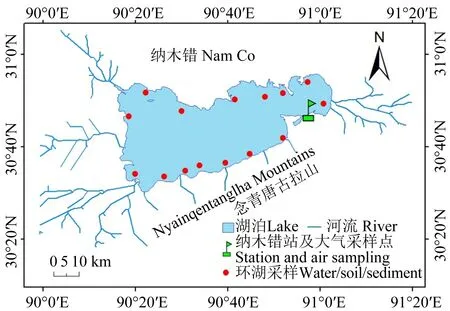
图1 纳木错及采样点的位置Fig. 1 Location of Nam Co Lake and sampling sites
1.2 模型框架
本研究以Mackay[29]的三级逸度模型为基础,结合纳木错流域的具体环境构建适合高原的稳态多介质模型。选取以纳木错湖为中心,面积为10 680 km2的流域范围作为研究区[38]。将环境系统分为4个主相:依次为大气(1)、水(2)、土壤(3)和沉积物(4)。其中,各主相中又存在着气、颗粒物、水和生物等子相(见表1)。
模拟的主要环境过程包括POPs在大气、土壤、湖水和沉积物各介质之间的界面交换过程。迁移通量为逸度(f, Pa)与相间迁移系数D值(mol·h-1·Pa-1)的乘积。为考察冰川融水对污染物输入的贡献,本研究将径流作为向湖泊输入的一个过程融入到模型中。由于缺乏上风向大气污染物输入的准确数据,本文直接使用当地大气中实测POPs浓度和径流向湖泊输入的POPs通量作为驱动数据。依据稳态假设,各环境相的质量平衡方程可表达为:
水:T02t+(D12d+D12r+D12p+D12w)×f1
+D32×f3+D42×f4=(DR2+D21+D24+D2f)×f2
土壤:(D13d+D13r+D13p+D13w)×f1
=(DR3+D31+D32)×f3
沉积物:D24×f2=(DR4+D42+D4B)×f4式中,T02t为污染物通过径流向湖泊输入的速率(mol·h-l);Dij为相间迁移速率,下标d, r, p, w分别表示气态交换、雨水溶解、颗粒态干沉降和颗粒态湿沉降;DRi为污染物在环境相i中的降解速率;D2f为鱼对污染物的富集速率;D4B为污染物向深层沉积物的掩埋速率。各D值的具体计算方法参照文献[29, 39]。
1.3 参数识别
基于纳木错大气POPs的观测[40],本研究共选取4种化合物进行模拟:六六六(α-HCH)和滴滴涕(p,p′-DDT)为OCPs的代表,主要来源于长距离传输;菲(Phe)是大气中含量最高的PAHs[40],而苯并芘(BaP)的毒性较强且最受关注,因此将它们分别作为小分子和大分子PAH的代表。通过实测和文献调研,共需收集2套数据,分别用于模型输入和模型验证。输入数据包括流域环境参数(表1)、介质迁移参数[29]、化合物理化性质(表2)和模型驱动数据(表2)。表1中各环境相的面积、深度、各子相的体积分数和有机碳含量均为实测数据。表2中化合物的理化参数都经过了温度校正(T=273.15 K),大气浓度来自于纳木错站的观测结果[40],径流输送量由河水中实测POPs的浓度与径流量[38]相乘所得。用于模型验证的数据为各介质中POPs的实测浓度值,它们是模拟结果准确性评价和参数优化的依据。为使实测数据具有较好的空间代表性,本研究环纳木错湖采集了15个湖水、12个沉积物和20个土壤样品(图1)。样品的前处理与实验室分析方法详见文献[15, 40-41]。表3列出了各介质中POPs的实测浓度数据。
1.4 求解与验证
基于上述模型框架和参数收集,利用Matlab编程即可求解得到POPs在土壤、湖水和沉积物3个主环境相中的模拟浓度,将其与实测数据进行比较,以验证模型的准确性。为考察输入参数对模型结果的影响,分别进行灵敏度和不确定性分析。灵敏度分析旨在检验单一参数变化对模拟结果的影响,其做法为分别对各输入参数作±10%的变动,计算输出结果Y的相对变化,常用灵敏度因子S表示[39]:

S=
通过比较S的大小可明确对模型结果影响较大的关键参数。在此基础上,选取S>0.5的高灵敏度参数进行不确定性分析,即利用蒙特卡洛方法考察多参数同时变化对模拟结果的影响[30]。假设输入参数均符合对数正态分布,根据其均值和标准差产生随机数,运行10 000次,可得模拟浓度的波动范围和变异系数(CV)。
2 结果与讨论(Results and discussion)
2.1 模型验证
经过模拟计算,获得了4种POPs在各子相中的模拟浓度,如图2所示。为验证模型的准确性,对模拟结果与实测值进行了比较,发现各化合物在各子相的模拟与实测浓度都吻合较好,差异小于3倍(图2)。这表明本研究构建的多介质逸度模型能够较为准确地反映当地的污染情况,适用于纳木错地区POPs的迁移与归趋模拟。
2.2 多介质迁移与最终归趋
基于模拟浓度可进一步计算得到污染物在介质间的迁移通量和各介质中的储量,其结果如图3所示。从交换方向上看,α-HCH, p,p′-DDT, Phe和BaP都呈现出大气向土壤、大气向湖水、湖水向沉积物的净沉降,这表明纳木错的土壤和湖泊是大气中污染物的汇。其中,以大气向土壤的迁移通量最大,4种化合物的气-土交换通量分别为1.1×10-4, 2.0×10-4, 2.0×10-1和3.9×10-3kg·h-1(图3)。就湖水-沉积物界面而言,α-HCH和p,p′-DDT的沉降和释放通量相差较小,而Phe和BaP向沉积物的积累通量远大于释放通量(图3),这可能会导致PAHs更多地存储于湖泊沉积物中。除介质间迁移外,降解损失为各介质中污染物的主要输出途径(图3)。
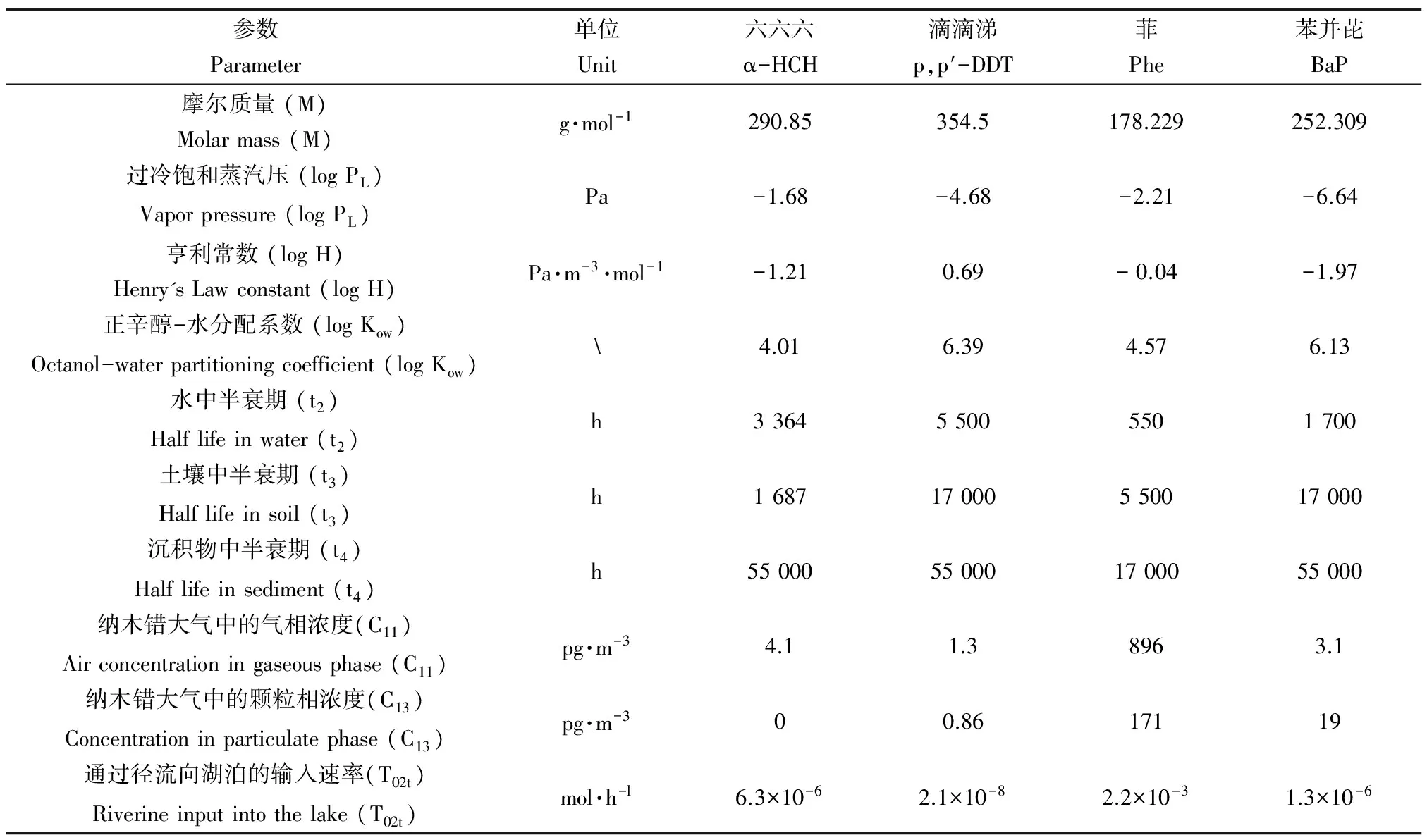
表2 化合物的理化性质与模型驱动参数Table 2 Physicochemical properties and input data of the simulated chemicals

表3 POPs在纳木错各介质中的实测浓度Table 3 Measured concentrations of POPs in the multimedia environment of Nam Co
注:C22、C23、C2f、C33和C43分别表示污染物在湖水、湖水中悬浮颗粒物、鱼体、土壤和沉积物中的浓度。ww为湿重;dw为干重。
Note: C22, C23, C2f, C33and C43are the concentrations in lake water, suspended particles, fish, soil and sediment, respectively. ww: wet weight; dw: dry weight.
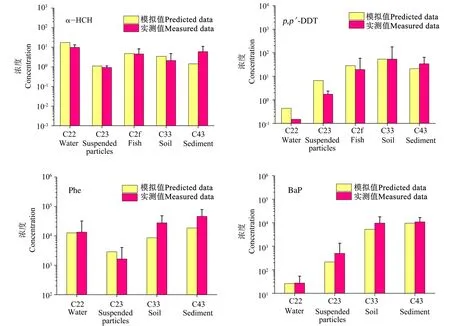
图2 模拟浓度与实测浓度的比较Fig. 2 Comparison between the predicted and measured concentrations
近年来,多项研究都指出冰川消融已成为一种重要的“二次源”在向高山湖泊输入POPs[42-43],然而支持这一观点的实测数据较为缺乏。青藏高原在20世纪以来气候快速变暖,升温率是全球同期平均值的2倍,达到每10年0.3~0.4°C[44]。这导致高原冰川快速消融,促进了径流量的增加,并可能引起污染物的释放。为探明冰川消融对POPs输出和循环的影响,本研究将冰川融水径流作为向湖泊输入的一个过程融入多介质模拟中。其结果显示,对于4种目标化合物,径流输入的贡献都很小,即使对于水溶性较好的α-HCH,也仅有3%是来自于径流输入。这说明大气沉降仍是湖泊中污染物的主要贡献者(图3)。这与Nellier等[45]在欧洲阿尔卑斯山冰川补给湖的研究结果一致。
由于来源和理化性质的差异,4种模拟化合物在纳木错流域的储量和最终归趋表现出不同规律。α-HCH和p,p′-DDT的总储量分别为3.5 kg和28.4 kg,它们主要来源于大气的长距离传输[40]。相比之下,由于PAHs存在本地源的贡献[46],Phe和BaP在纳木错环境中的储量比OCPs高2~3个数量级,分别为8.2 t和3.9 t。这表明PAHs是当地主要的污染物。就最终归趋而言,湖水是α-HCH的归宿之一,可占其总量的46%(图3),这与α-HCH具有较好的水溶性有关。而疏水性强的p,p′-DDT不易在湖水中分配,大于88%的DDT都最终归趋于土壤(图3)。这说明DDT类化合物对青藏高原的陆地生态系统影响更大。同样地,土壤也是PAHs类化合物的主要归宿,分别占Phe和BaP总储量的49%和63%(图3)。此外,PAHs在湖泊沉积物中也有一定的积累(约占35%,图3),沉积物是其第二大储库,这可能对水生生态系统存在潜在风险。
2.3 灵敏度分析
灵敏度分析能够反映模型输出结果对参数变化的敏感程度,其结果对于模型优化有着重要的指导意义。表4以S>0.5为标准,列出了本研究中对模拟结果影响较大的高灵敏度参数。结果显示,大气中污染物的浓度(C11和C13)对所有化合物都有较大影响,S值接近于1,表现出大气沉降对该地区污染物输入的决定性作用。环境温度(T)的S值为负,且绝对值最大,这表明随着温度的降低,环境中POPs的浓度增加,该结果与POPs的冷捕集效应一致[47]。由此可知,青藏高原温度较低的地区必然富集了更多的污染物,而温度的升高会使青藏高原“汇”的作用减弱。同时,温度的高灵敏度也证实了模拟中化合物理化性质参数进行温度校正的必要性。
如表4所示,化合物的亨利常数(H)、过冷饱和蒸汽压(PL)和正辛醇-水分配系数(Kow)对模拟结果也有很大影响,部分S的绝对值远大于1。对介质迁移类参数而言,仅气-水界面迁移系数(K12)、干沉降速率(Kp)、降水速率(Kw)和湿沉降清除效率(Sr)的灵敏度系数较高。此外,还有部分参数的灵敏度具有专一性,即只对某一相的浓度有影响。例如,颗粒物中的有机碳含量(O23)仅对湖水悬浮颗粒物中POPs浓度有较大影响;土壤中降解速率(t3)和土壤相的厚度(h3)对土壤相浓度有较大影响;而沉积物中降解速率(t4)、沉积物的有机碳含量(O43)和水中颗粒物的沉降速率(KS)都只对沉积物相浓度有影响。
可见,大气中的浓度、环境温度和化合物的性质是影响POPs在环境中分布的关键因素,这些参数的准确性是模拟结果可靠性的保证。
2.4 不确定性分析
模拟浓度的变异系数CV值越大,则表明其不确定性越大。图4为本研究模型的不确定性分析结果,湖水和土壤中污染物浓度的CV值为100%左右,不确定较小;而沉积物的不确定性最大,CV为130%以上。这与影响沉积物浓度的参数较多、不确定性较大有关。与其他研究相比,本研究中模型的不确定性与北京地区的研究结果相当(CV<150%)[30],而远小于兰州地区多介质模拟的误差(CV达400%)[33]。这也证实了本研究中多介质模型的准确性。
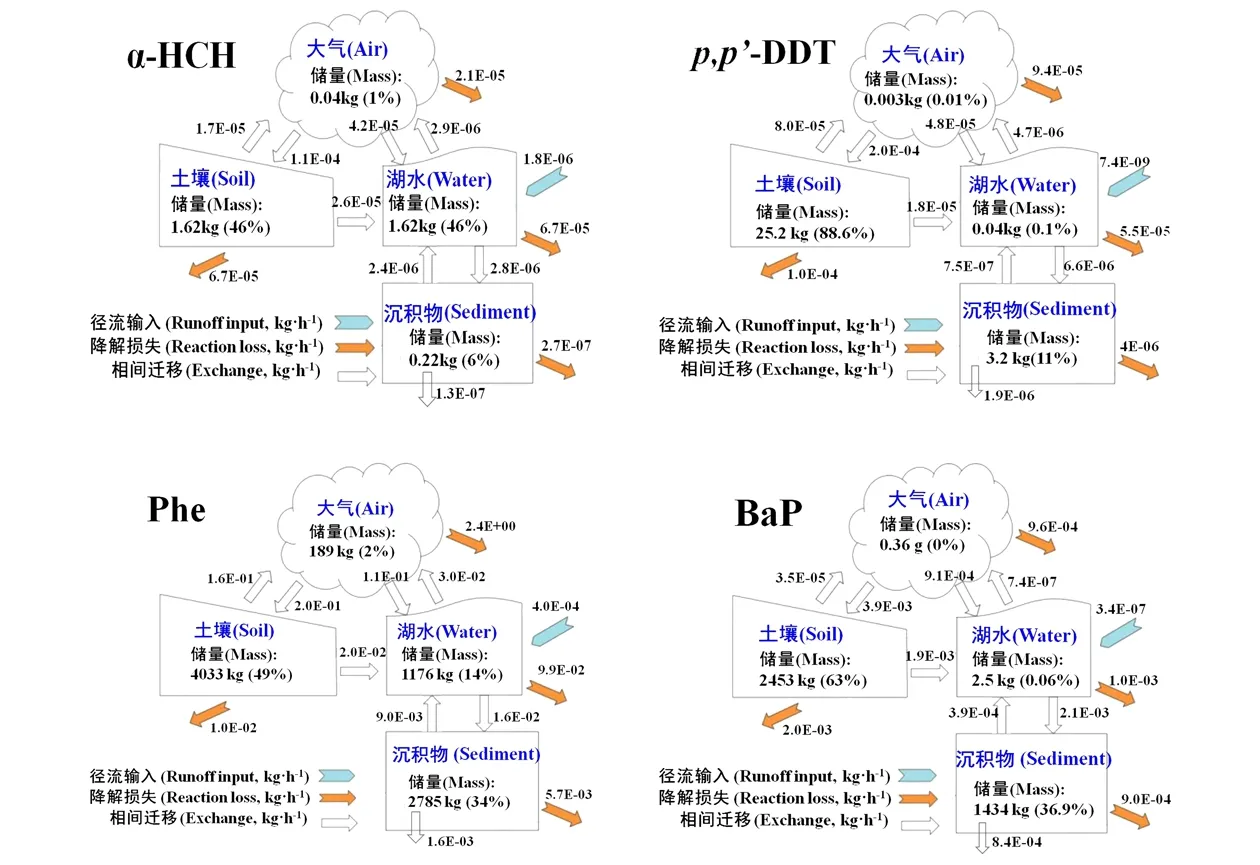
图3 各环境介质中污染物的储量和介质间的迁移通量Fig. 3 Mass balance diagram showing the transfer fluxes and reserves in different media of Nam Co Basin
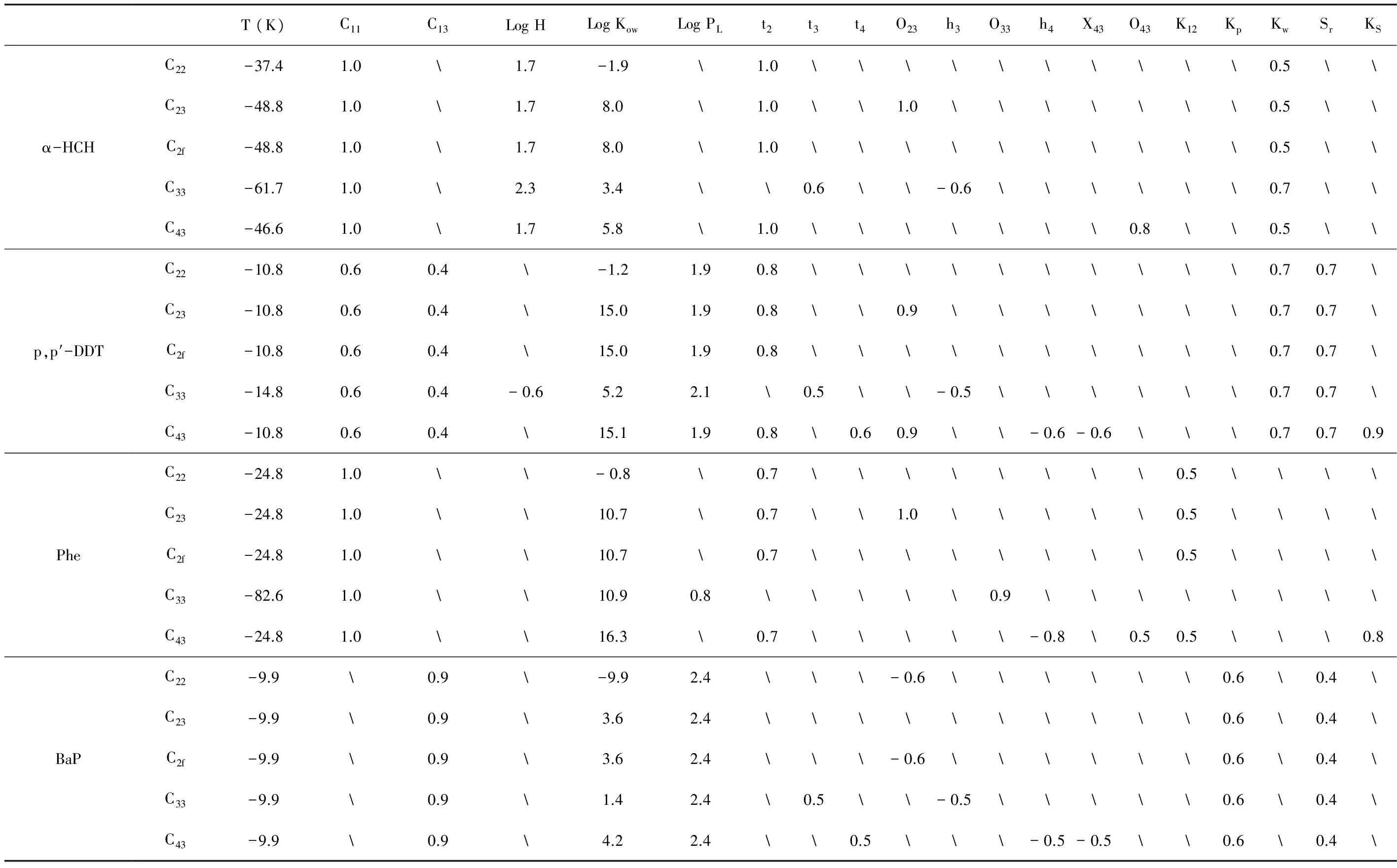
表4 参数灵敏度分析Table 4 Sensitivity analysis of the parameters in the model
注: 表示参数的灵敏度因子小于0.5。
Note: means the sensitivity coefficient (S) is lower than 0.5.
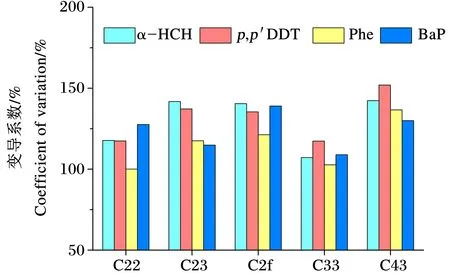
图4 模型模拟浓度的变异系数Fig. 4 The coefficient of variation (CV) of POPs concentrations in sub-phases
综上所述,多介质环境逸度模型被成功应用于青藏高原纳木错流域,4种典型POPs在该流域大气-土壤-湖泊-沉积物系统中的迁移和归趋得以量化。研究结果显示,大气沉降是该地区污染物向土壤和湖泊输入的主要过程,土壤和沉积物是POPs的最终归宿。明确不同POPs的环境归趋也为今后的研究指明了一定方向。首先,应当着重关注DDT沿土壤-草地-陆生生物的传递与风险评价。其次,青藏高原水生生物中PAHs类化合物的研究相对缺乏,其含量、富集规律和健康风险都有待研究。作为对POPs在青藏高原归趋模拟的初步探索,本研究证实了逸度模型在高原的适用性,未来应在此基础上开展更加全面和深入的模拟研究。一方面,应当考虑环境和迁移过程的季节性差异,着重提高模型的时空分辨率;另一方面,利用四级逸度模型的长期预测优势,开展未来气候变化情景下污染物在青藏高原的迁移与归趋变化具有重要意义。
[1] 余刚, 周隆超, 黄俊, 等. 持久性有机污染物和《斯德哥尔摩公约》履约[J]. 环境保护, 2010, 23: 13-15
Yu G, Zhou L C, Huang J, et al. Persistent organic pollutants and Stockholm Convention[J]. Environmental Protection, 2010, 23: 13-15 (in Chinese)
[2] Beyer A, Mackay D, Matthies M, et al. Assessing long-range transport potential of persistent organic pollutants [J]. Environmental Science & Technology, 2000, 34(4): 699-703
[3] Wang R, Tao S, Wang B, et al. Sources and pathways of polycyclic aromatic hydrocarbons transported to Alert, the Canadian High Arctic [J]. Environmental Science & Technology, 2010, 44(3): 1017-1022
[4] MacDonald R W, Barrie L A, Bidleman T F, et al. Contaminants in the Canadian Arctic: 5 years of progress in understanding sources, occurrence and pathways [J]. Science of the Total Environment, 2000, 254(2-3): 93-234
[5] Kallenborn R, Breivik K, Eckhardt S, et al. Long-term monitoring of persistent organic pollutants (POPs) at the Norwegian Troll station in Dronning Maud Land, Antarctica [J]. Atmospheric Chemistry and Physics, 2013, 13(14): 6983-6992
[6] Wang X P, Gong P, Yao T D, et al. Passive air sampling of organochlorine pesticides, polychlorinated biphenyls, and polybrominated diphenyl ethers across the Tibetan Plateau [J]. Environmental Science & Technology, 2010, 44(8): 2988-2993
[7] Ali U, Syed J H, Malik R N, et al. Organochlorine pesticides (OCPs) in South Asian region: A review [J]. Science of the Total Environment, 2014, 476: 705-717
[8] Sheng J J, Wang X P, Gong P, et al. Monsoon-driven transport of organochlorine pesticides and polychlorinated biphenyls to the Tibetan Plateau: Three year atmospheric monitoring study [J]. Environmental Science & Technology, 2013, 47(7): 3199-3208
[9] Gong P, Wang X P, Sheng J J, et al. Variations of organochlorine pesticides and polychlorinated biphenyls in atmosphere of the Tibetan Plateau: Role of the monsoon system [J]. Atmospheric Environment, 2010, 44(21-22): 2518-2523
[10] Gong P, Wang X P, Xue Y G, et al. Influence of atmospheric circulation on the long-range transport of organochlorine pesticides to the western Tibetan Plateau [J]. Atmospheric Research, 2015, 166: 157-164
[11] Wang X P, Ren J, Gong P, et al. Spatial distribution of the persistent organic pollutants across the Tibetan Plateau and its linkage with the climate systems: A 5-year air monitoring study [J]. Atmospheric Chemistry and Physics, 2016, 16(11): 6901-6911
[12] Wang X P, Gong P, Sheng J J, et al. Long-range atmospheric transport of particulate polycyclic aromatic hydrocarbons and the incursion of aerosols to the southeast Tibetan Plateau [J]. Atmospheric Environment, 2015, 115: 124-131
[13] Ma W L, Qi H, Baidron S, et al. Implications for long-range atmospheric transport of polycyclic aromatic hydrocarbons in Lhasa, China [J]. Environmental Science and Pollution Research, 2013, 20(8): 5525-5533
[14] Tao S, Wang W T, Liu W X, et al. Polycyclic aromatic hydrocarbons and organochlorine pesticides in surface soils from the Qinghai-Tibetan Plateau [J]. Journal of Environmental Monitoring, 2011, 13(1): 175-181
[15] Wang X P, Sheng J J, Gong P, et al. Persistent organic pollutants in the Tibetan surface soil: Spatial distribution, air-soil exchange and implications for global cycling [J]. Environmental Pollution, 2012, 170: 145-151
[16] Wang C F, Wang X P, Yuan X H, et al. Organochlorine pesticides and polychlorinated biphenyls in air, grass and yak butter from Namco in the central Tibetan Plateau [J]. Environmental Pollution, 2015, 201: 50-57
[17] Wang X P, Halsall C, Codling G, et al. Accumulation of perfluoroalkyl compounds in Tibetan mountain snow: Temporal patterns from 1980 to 2010 [J]. Environmental Science & Technology, 2014, 48(1): 173-181
[18] Wang X P, Gong P, Zhang Q G, et al. Impact of climate fluctuations on deposition of DDT and hexachlorocyclohexane in mountain glaciers: Evidence from ice core records [J]. Environmental Pollution, 2010, 158(2): 375-380
[19] Kang J H, Sungdeuk C, Hyokeun P, et al. Atmospheric deposition of persistent organic pollutants to the East Rongbuk Glacier in the Himalayas [J]. Science of the Total Environment, 2009, 408(1): 57-63
[20] 张伟玲, 张干, 祁士华, 等. 西藏错鄂湖和羊卓雍湖水体及沉积物中有机氯农药的初步研究[J]. 地球化学, 2003, 32(4): 363-367
Zhang W L, Zhang G, Qi S H, et al. A preliminary study of organochlorinepesticides in water and sediments from two Tibetan Lakes[J]. Geochimica, 2003, 32(4): 363-367 (in Chinese)
[21] Cheng H, Lin T, Zhang G, et al. DDTs and HCHs in sediment cores from the Tibetan Plateau [J]. Chemosphere, 2014, 94: 183-189
[22] Yang R Q, Xie T, Li A, et al. Sedimentary records of polycyclic aromatic hydrocarbons (PAHs) in remote lakes across the Tibetan Plateau [J]. Environmental Pollution, 2016, 214: 1-7
[23] Shi Y L, Pan Y Y, Yang R Q, et al. Occurrence of perfluorinated compounds in fish from Qinghai-Tibetan Plateau [J]. Environment International, 2010, 36(1): 46-50
[24] Yang R Q, Wang Y W, Li A, et al. Organochlorine pesticides and PCBs in fish from lakes of the Tibetan Plateau and the implications [J]. Environmental Pollution, 2010, 158(6): 2310-2316
[25] Daly G L,Wania F. Organic contaminants in mountains [J]. Environmental Science & Technology, 2005, 39(2): 385-398
[26] Liu X, Chen B. Climatic warming in the Tibetan Plateau during recent decades [J]. International Journal of Climatology, 2000, 20(14): 1729-1742
[27] Yang K, Wu H, Qin J, et al. Recent climate changes over the Tibetan Plateau and their impacts on energy and water cycle: A review [J]. Global and Planetary Change, 2014, 112: 79-91
[28] Mackay D. Finding fugacity feasible [J]. Environmental Science & Technology, 1979, 13(10): 1218-1223
[29] Mackay D. Multimedia Environmental Models: The Fugacity Approach [M]. Second edition. Boca Raton, FL:Lewis Publishers, 2001: 1-183
[30] 曹红英, 梁涛, 陶澍. 北京地区有机氯农药的跨界面迁移与归趋[J]. 应用基础与工程科学学报, 2004, 12(3): 249-258
Cao H Y, Liang T, Tao S. Simulating the transfer flux and fate of organochlorine pesticide in Beijing [J]. Journal of Basic Science and Engineering, 2004, 12(3): 249-258 (in Chinese)
[31] Tao S, Cao H Y, Liu W, et al. Fate modeling of phenanthrene with regional variation in Tianjin, China [J]. Environmental Science & Technology, 2003, 37(11): 2453-2459
[32] 曹红英, 龚钟明, 曹军, 等. 估算天津环境中γ-HCH归宿的逸度模型[J]. 环境科学, 2003, 24(2): 77-81
Cao H Y, Gong Z M, Cao J, et al. Evaluating the fate of γ-HCH using fugacity model in Tianjin environment [J]. Environmental Science, 2003, 24(2): 77-81 (in Chinese)
[33] 高宏, 董继元, 吴军年. 兰州地区HCHs的跨界面迁移与归趋[J]. 中国环境科学, 2008, 28(5): 407-411
Gao H, Dong J Y, Wu J N. Transfer and fate of HCHs in Lanzhou region [J]. China Environmental Science, 2008, 28(5): 407-411 (in Chinese)
[34] Wania F, Mackay D. A global distribution model for persistent organic-chemicals [J]. Science of the Total Environment, 1995, 160-161: 211-232
[35] 王君波, 朱立平, 鞠建廷, 等. 西藏纳木错水深分布及现代湖沼学特征初步分析[J]. 湖泊科学, 2009, 21(1): 128-134
Wang J B, Zhu L P, Ju J T, et al. Bathymetric survey and modern limnological parameters of Nam Co, central Tibet [J].Journal of Lake Sciences, 2009, 21(1): 128-134(in Chinese)
[36] 朱立平, 谢曼平, 吴艳红. 西藏纳木错1971~2004年湖泊面积变化及其原因的定量分析[J]. 科学通报, 2010, 55(18): 1789-1798
Zhu L P, Xie M P, Wu Y H. Quantitative analysis of lake area variations and the influence factors from 1971 to 2004 in the Nam Co Basin of the Tibetan Plateau. [J]. Chinese Science Bulletin, 2010, 55(18): 1789-1798(in Chinese)
[37] 游庆龙, 康世昌, 李潮流, 等. 青藏高原纳木错气象要素变化特征[J]. 气象, 2007, 33(3): 54-60
You Q L, Kang S C, Li C L, et al. Variation features of meteorological elements at Namco station, Tibetan Plateau [J]. Meteorological Monthly, 2007, 33(3): 54-60 (in Chinese)
[38] Zhou S Q, Kang S C, Chen F, et al. Water balance observations reveal significant subsurface water seepage from Lake Nam Co, south-central Tibetan Plateau [J]. Journal of Hydrology, 2013, 491: 89-99
[39] Xu F L, Qin N, Zhu Y, et al. Multimedia fate modeling of polycyclic aromatic hydrocarbons (PAHs) in Lake Small Baiyangdian, Northern China [J]. Ecological Modelling, 2013, 252: 246-257
[40] Ren J, Wang X P, Wang C F, et al. Atmospheric processes of organic pollutants over a remote lake of the central Tibetan Plateau: Implications for regional cycling [J]. Atmospheric Chemistry and Physics, 2017, 17: 1401-1415
[41] Ren J, Wang X P, Wang C F, et al. Biomagnification of persistent organic pollutants along a high-altitude aquatic food chain in the Tibetan Plateau: Processes and mechanisms [J]. Environmental Pollution, 2017, 220: 636-643
[42] Bogdal C, Schmid P, Zennegg M, et al. Blast from the past: Melting glaciers as a relevant source for persistent organic pollutants [J]. Environmental Science & Technology, 2009, 43(21): 8173-8177
[43] Schmid P, Bogdal C, Blüthgen N, et al. The missing piece: Sediment records in remote mountain lakes confirm glaciers being secondary sources of persistent organic pollutants [J]. Environmental Science & Technology, 2010, 45(1): 203-208
[44] 陈德亮, 徐柏青, 姚檀栋, 等. 青藏高原环境变化科学评估:过去、现在与未来[J]. 科学通报, 2015, 60(32): 3025-3035
Chen D L, Xu B Q, Yao T D, et al. Assessment of past, present and future environmental changes on the Tibetan Plateau[J]. Chinese Science Bulletin, 2015, 60(32): 3025-3035(in Chinese)
[45] Nellier Y M, Perga M E, Cottin N, et al. Mass budget in two high altitude lakes reveals their role as atmospheric PCB sinks [J]. Science of the Total Environment, 2015, 511: 203-213
[46] Li C L, Kang S C, Chen P F, et al. Characterizations of particle-bound trace metals and polycyclic aromatic hydrocarbons (PAHs) within Tibetan tents of south Tibetan Plateau, China [J]. Environmental Science and Pollution Research, 2012, 19(5): 1620-1628
[47] Scheringer M, Wegmann F, Fenner K, et al. Investigation of the cold condensation of persistent organic pollutants with a global multimedia fate model [J]. Environmental Science & Technology, 2000, 34(9): 1842-1850
◆
MultimediaFateModelingofPersistentOrganicPollutantsinNamCoBasin,TibetanPlateau
Ren Jiao1,3, Wang Xiaoping1,2,*, Wang Chuanfei1,2, Gong Ping1,2, Yao Tandong1,2
1. Key Laboratory of Tibetan Environment Changes and Land Surface Processes, Institute of Tibetan Plateau Research, Chinese Academy of Sciences, Beijing 100101, China2. CAS Center for Excellence in Tibetan Plateau Earth Sciences, Beijing 100101, China3. University of Chinese Academy of Sciences, Beijing 100049, China
10.7524/AJE.1673-5897.20170120002
2017-01-20录用日期2017-03-13
1673-5897(2017)3-170-10
X171.5
A
王小萍(1976-),女,博士,研究员,主要研究方向为青藏高原环境污染与变化。
国家自然科学基金项目(41222010, 41671480);中国科学院青年创新促进会项目(CAS2011067)
任娇(1990-),女,博士研究生,研究方向为青藏高原环境污染,E-mail: renjiao@itpcas.ac.cn
*通讯作者(Corresponding author), E-mail: wangxp@itpcas.ac.cn
任娇, 王小萍, 王传飞, 等. 青藏高原纳木错流域持久性有机污染物的多介质迁移与归趋模拟[J]. 生态毒理学报,2017, 12(3): 170-179
Ren J, Wang X P, Wang C F, et al. Multimedia fate modeling of persistent organic pollutants in Nam Co Basin, Tibetan Plateau [J]. Asian Journal of Ecotoxicology, 2017, 12(3): 170-179 (in Chinese)
